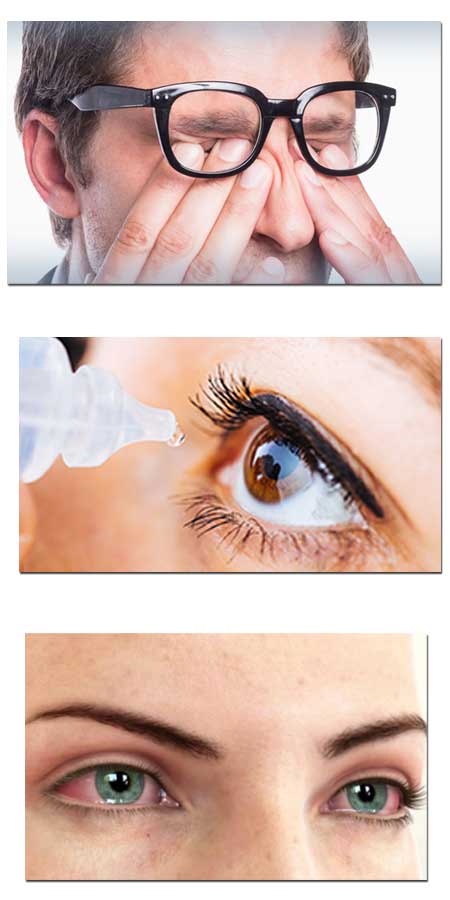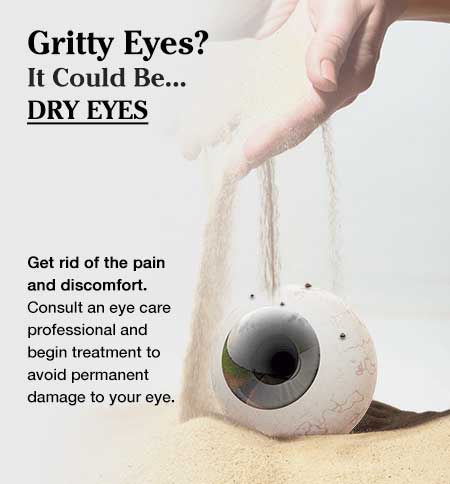
Personalized Eyewear Consultation by Appointment Only (215) 443-7706
- Home
- About
- Products
- Services
- Lens Lab
- Vision Care
- Newsletter
- Contact Us
Menu- Home
- About
- » Doug Wohl
- » Awards
- » Reviews
- Products
- » Bifocals
- » Computer Glasses
- » » Computer Vision Syndrome - Digital Eye Strain
- » Contact Lenses
- » » Are Contacts Right For You
- » » Guidelines for Contacts Wear and Care
- » » Instructions for Soft Contacts
- » Eyeglass Frames
- » » Frame Guide - Frame Shape and Face Shape
- » » Frame Materials
- » » Eyewear Maintenance
- » » Makeup Tips When Wearing Glasses
- » » Wiley X Eyewear Frames
- » Children Eyeglasses
- » » Eyewear for Babies and Young Children 0-5 Years Old
- » » Kids Corner
- » » 10 Tips for Buying Glasses for Children
- » Occupational Eyeglasses
- » Prescription Lenses
- » » Lens Coatings and Tints
- » » » Anti Reflective Coating
- » » Replacement Lens Options
- » Progressives
- » Readers
- » Safety Glasses
- » » Eye Injuries that Could be Prevented with Safety Glasses
- » » Prescription Safety Eye Glass Feature Guide
- » Single Vision Eyeglasses
- » Sports Eyewear
- » Sunglasses
- » » UV Eye Safety
- Services
- » Eye and Vision Exam
- » » Eye and Vision Problems
- » » Glaucoma Test
- » » Vision Refraction
- » Contact Lens Exam and Fitting
- » Eyeglass Repair
- Lens Lab
- Vision Care
- » Cornea
- » Detached Retina
- » Diabetic Retinopathy
- » Dry Eyes
- » Eye and Vision Conditions
- » Fun Eye Facts
- » Eye Function and Parts Explained
- » FAQ
- » Macular Degeneration
- » Makeup Causing Eye Damage
- » Medication Side Effects to Vision
- » Optic Nerve Damage
- » Optical Terms and Definitions
- » Red Eye
- » Retina Damage
- Newsletter
- » Blue Light Blocker Glasses
- » Buying Glasses Online
- » Covid-19 Safety Practices
- Contact Us
- Home Vision Care Dry Eyes

Dry eye syndrome is a chronic and typically progressive condition. Depending on its cause and severity, it may not be completely curable. But in most cases, dry eyes can be managed successfully, usually resulting in noticeably greater eye comfort, fewer dry eye symptoms, and sometimes sharper vision as well. Because dry eye disease can have a number of causes, a variety of treatment approaches are used.
Dry eyes are not only painful, but can also damage your eye tissues and impair vision. Dry eyes may be caused by diseases like Sjögren, use of medication or the environment. Dry eyes can also develop after refractive surgery known as LASIK.
Eye comfort depends largely upon sufficient moisture in your eye. Moisture on the surface of your eye protects it. On the surface of the cornea the outer layer is your tear film, the moisture laden surface of the eye. Tears bathe the surface of the eye, keeping it moist, and wash away dust and debris. They also help protect the eye from bacterial and other types of infections.
Symptoms of Dry Eyes
- Blurred vision episodes
- Decreased tolerance of reading, working on the computer, or any activity requiring sustained visual attention
- Discharge from your eye
- Eye fatigue
- Eye stinging or burning
- Heavy eyelids
- Pain and redness of your eye
- Sandy or gritty feeling as if something is in your eye
- Unable to cry when emotionally stressed
- Uncomfortable contact lenses
Medications Can Cause Dry Eyes
Medications that may cause dry eyes include:
- Appetite suppressants.
- Birth control pills.
- Hormone replacement. Women who are on hormone replacement therapy may experience dry eye symptoms. Women taking only estrogen are 70 percent more likely to experience dry eye, whereas those taking estrogen and progesterone have a 30 percent increased risk of developing dry eye.
- Blood pressure medications.
- Medications for acne, such as Accutane can cause the feeling of dust in the eye, burning eyes, redness, short-term vision distortions, and night blindness.
Dry Eye Treatment
- Avoid air blowing in their eyes. For example, Wohl Optics advises patients to avoid the use of hair dryers and to not sit directly under air conditioning or fans; use an air humidifier. This will help to moisten the air, which can help to reduce the risk of eyes drying out.
- Consider wearing wrap-around sunglasses or other protective eyewear. Safety shields can be added to the tops and sides of eyeglasses to block wind and dry air.
- Take regular breaks during long tasks that require visual concentration. This can include looking away from the computer screen, for example, or remembering to blink regularly.
- If you use a computer, position it correctly. You should be looking down at the computer screen, so that you do not have to open your eyes as wide. This will help to prevent evaporation between blinks.
- If you are a computer user, remember to blink. When you work at the computer, your blink rate decreases sharply. Researchers have discovered that equally important with blinking is blinking completely. Making sure that when you blink you close the eyelids completely makes a large difference in reducing the symptoms of dry eye and computer eye syndrome.
- If you smoke, stop smoking and avoid smoky environments. Smoke can trigger symptoms of dry eye disease, and can cause or exacerbate other health problems. Many pharmacies offer a smoking cessation service to support patients.
- This is not one that my women patients like at all but, if your dry eye symptoms are severe, please avoid eye make-up, particularly eyeliner or mascara. These products can block meibomian glands and cause inflammation around the eyes, exacerbating symptoms.
- We suggest that you increase the amount of omega-3 in the your diet, or omega-3 supplements. There is evidence to suggest that omega-3 can be helpful in preventing symptoms of dry eye. Omega-3 is present in fish and fish oils, canola oil, flaxseeds and walnuts. Several formulations of omega-3 supplement, specifically for dry eye, are also now commercially available. The supplements may be particularly useful for patients with blepharitis or patients who have dry eye caused by contact lens wear.
- We recommend over-the-counter treatment if appropriate. There are many different types of over-the-counter treatments available in a variety of different formulations. Avoid preservatives in the formulation. Warning - Artificial tears that say they will "get the red out" will reduce circulation of blood in your eye and decrease production of tear film, actually making your eyes still drier. If you have dry eyes, artificial tears are usually recommended which provide short-term relief, but only hide the symptoms without improving the condition. In fact, preservatives in such formulations can actually worsen your dry eye condition. The only way to make sure you are using preservative free formulations is to use individual ampules. Even though many artificial tears say they are preservative free, they really are not.
- To prevent dry eyes, protect your eyes from the environment, lubricate your eyes, apply warm compress, or call us for an optometrist eye exam.
Inflammation of the surface of your eye may occur along with dry eye. If left untreated, this condition can lead to pain, ulcers, or scars on the cornea, and some loss of vision.
Wohl Optics has patients with plugs in the drainage holes, small circular openings at the inner corners of the eyelids where tears drain from the eye into the nose. Lacrimal plugs, also called punctal plugs, can be inserted painlessly by your eye care professional. You usually do not feel them. These plugs are made of silicone or collagen, are reversible, and are a temporary measure. In severe cases, permanent plugs may be considered.
About Wohl Optics Vision Care
Proper eyewear prescription AND fit are vital for your best vision. Fit is something that you will never get right with an online optical business. Veteran owned and operated - best in Bucks County Optical eye care shop.
How could your vision be better? What situations do you feel give you trouble when wearing eyeglasses? That is why we are here.
Exclusive Discounts
Military, Veterans, First Responders, Police, Firefighters, Ambulance all receive exclusive discounts (not combined with insurance or other discounts).
We accept most major Vision Insurance Plans.
(215) 443-7706 Phone
(215) 443-8795 FaxWohl Optics
550 Street Rd.
Warminster, PA 18974Veteran Helping Veterans - Local Bucks County, PA Independent Optician

Copyright © 2016-2022
All Rights ReservedCredit Cards Accepted

Private Consultations for your Family: Flexible hours at your convenience by appointment ONLY
Wohl Optics Regular Schedule:
Monday 10:00AM - 5:00PM Tuesday 10:00AM - 4:00PM Wednesday 10:30AM - 6:00PM Thursday 10:30AM - 7:30PM Friday 10:00AM - 6:00PM Saturday 10:00AM - 1:00PM We are offering personal appointments to everyone for the selection of eyeglasses and eyeglass adjustments. We will make every effort to accommodate your schedule. Let us know if you would like to meet at Wohl Optics outside of the above regular scheduled hours.
Service Areas
Bucks County, PA; Montgomery County, PA; Chester County, PA; Philadelphia, PA; Warminster, PA; Ivyland, PA; Warrington, PA;Furlong, PA; Warrington, PA; New Hope, PA; Southampton, PA; Bensalem, PA; Northampton, PA; Hatboro, PA; Willow Grove, PA; Huntingdon Valley, PA; Horsham, PA; Lansdale, PA; Montgomeryville, PA; Newtown, PA; Langhorne, PA; Lahaska, PA; Buckingham, PA; Yardley, PA; Chalfont, PA; Richboro, PA; Doylestown, PA; Glenside, PA; Ambler, PA; Fort Washington, PA; Churchville, PA; Norristown, PA; Washington Crossing, PA; Philadelphia, PA.
Wohl Optics 550 Street Rd. Warminster, PA 18974 (215) 443-7706 Privacy Policy HIPAA Sitemap
